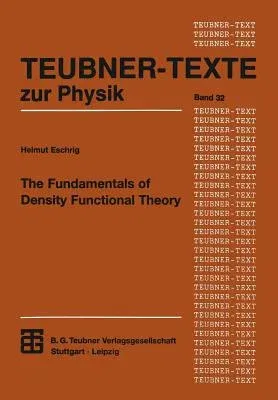The Fundamentals of Density Functional Theory (Softcover Reprint of the Original 1st 1996)Paperback - Softcover Reprint of the Original 1st 1996, 1 January 1996

Qty
1
Turbo
Ships in 2 - 3 days
In Stock
Free Delivery
Cash on Delivery
15 Days
Free Returns
Secure Checkout
Part of Series
Teubner Texte Zur Physik
Part of Series
Teubner-Texte Zur Physik
Print Length
204 pages
Language
English
Publisher
Vieweg+teubner Verlag
Date Published
1 Jan 1996
ISBN-10
3815430305
ISBN-13
9783815430309
Description
Product Details
Book Edition:
Softcover Reprint of the Original 1st 1996
Book Format:
Paperback
Country of Origin:
US
Date Published:
1 January 1996
Dimensions:
24.41 x
16.99 x
1.12 cm
ISBN-10:
3815430305
ISBN-13:
9783815430309
Language:
English
Location:
Wiesbaden
Pages:
204
Publisher:
Weight:
340.19 gm

